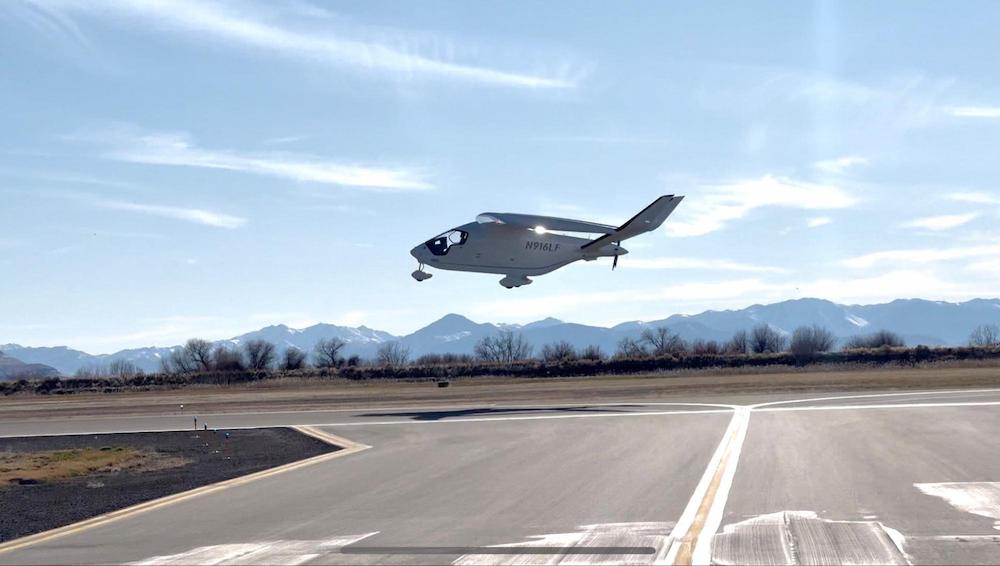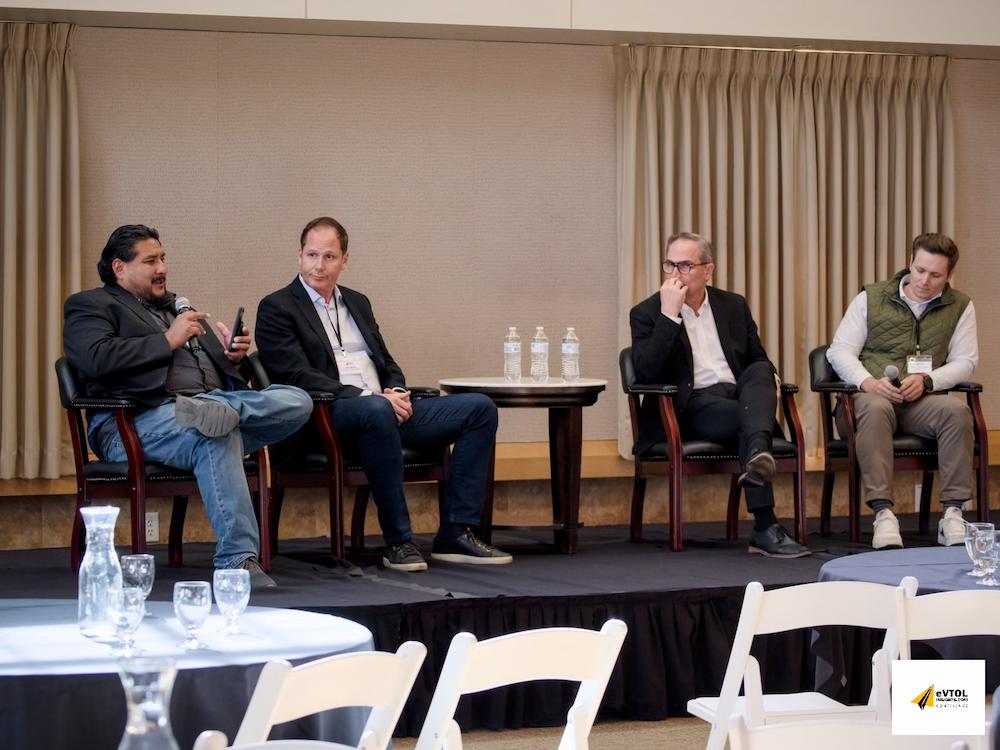By: Clint Harper, AG AAM Ambassador
Flight has always been about more than transportation, machines or speed. It’s about connection. It’s about how all life relates to the sky; whether moving through it, dreaming beneath it or drawing inspiration from its vitality and vastness. That relationship continues to evolve with Advanced Air Mobility (AAM), which has captured the imagination of policymakers, technologists and urbanists alike. What sets this moment apart is the growing recognition – one that Indigenous communities have known for thousands of years – that technology must be in service to the built and natural environment, not imposed upon it. AAM’s success depends not only on performance and policy, but on purpose. Nothing encapsulates this realization better than the lessons already learned from the various Olympic host cities in the United States: Los Angeles, Oklahoma City and Salt Lake City.
Old Dreams, New Intentions
Despite what’s commonly found in headlines about AAM, key questions relating to it go much deeper than aircraft specs or launch timelines. They touch on the communities we live in, the infrastructures we depend on and the shared responsibilities we carry; not just to each other, but to the land, the air and all life that we share the planet with.
While it’s tempting to think of AAM as something wholly new, this isn’t the first time aviation’s urban footprint has been reimagined. In the 1950s and ’60s, cities like New York and Los Angeles envisioned helicopter services as part of their broader transportation networks. Terms like the ‘helistop’ emerged, inspired by the role of bus stops, designed for short-hop urban flights. But those dreams faltered. High-profile accidents, noise concerns, cost and a lack of sustainable funding models ultimately grounded the vision.
What makes AAM different today isn’t just the ambition, it’s the intentionality. We’ve come a long way in addressing the very issues that once derailed urban air mobility (UAM): safety, community impact, environmental concerns and integration with existing infrastructure. Together, advancements in legacy systems and emerging technologies are renewing the possibility of a more integrated, purpose-driven system.
Yet a tension between ambition and intention for AAM still exists. No where did this become more visible than in the early conversations around the 2028 Olympic and Paralympic Games (LA28) in Los Angeles.
Los Angeles: A Dream Deferred And A Lesson Gained

Conversations with sources familiar with the 2028 Olympic and Paralympic Games’ planning, alongside my own experience serving the City of Los Angeles (LA), reveal a more nuanced picture of AAM’s early urban positioning. There was excitement about showcasing U.S. leadership in vertical flight, with ideas floated about transporting athletes and dignitaries between venues. While the aviation stakeholders saw opportunity, those closer to the broader logistical planning effort raised important concerns. Practical questions emerged. Could the aircraft be certified in time? Would there be measurable public benefit? What legacy would the effort leave behind?
Non-aviation stakeholders proposed alternative roles for AAM to serve the community, rather than the event itself, such as supporting emergency response or connecting underserved communities with resources to mitigate the impacts of 10-15 million visitors, but those ideas never fully took hold.
The biggest limiting factor in Los Angeles, however, seemed to be timing. Planning for a global event of this magnitude begins nearly a decade in advance. By the time conversations regarding AAM at LA28 began in earnest, much of the region’s transportation strategy for the Games was already fairly defined. Initial planning efforts were beginning to sunset to make way for the build and implementation phase.
While it is still possible that some AAM services may take place between existing infrastructure, the broader concept of an integrated, citywide demonstration has moved to the background.
While disappointing for some, the lessons from LA28 are invaluable. Rather than viewing it as a missed opportunity, it should be recognized as an important proof point: that vision alone isn’t enough. Timing, governance, and a clear sense of purpose will ultimately shape where and how AAM can take root. In many ways, LA’s experience offers the broader industry something more valuable than a demonstration — a reality check that will help future efforts succeed where hype alone would have fallen short.
Meanwhile, roughly 1,300 miles to the east of the City of Angels, there is a new hope for AAM.
Oklahoma’s Quiet Rise in Advanced Air Mobility
Recently announced, Oklahoma City (OKC) will host a portion of the 2028 Olympic Summer Games. This development has quietly put the city in a position of national visibility. It also seems to have the right equation for AAM success: land, political alignment and a community that is not only open to innovation but is actively seeking ways to be a part of it. And unlike the massively complex Los Angeles landscape, OKC seemingly has fewer entrenched barriers when it comes to airspace, permitting, land use, and community alignment.
The Federal Aviation Administration’s (FAA) interest is also reportedly growing, especially around the Mike Monroney Aeronautical Center, which supports aviation safety through regulatory development, procedural testing, and aerospace medical research critical to emerging technologies like AAM. The Oklahoma Department of Aerospace and Aeronautics (ODAA), the City of Oklahoma City, as well as our other State, Local, Regional, and Tribal partners, are all in exploratory talks.
For Doug Wood, Oklahoma’s State Manager for AAM, the Olympics are a catalytic moment: “It gives Oklahoma an early opportunity that we wouldn’t normally have.” Wood pointed to three factors shaping Oklahoma’s opportunity:
- An AAM Launchpad: The Olympic platform creates an entry point for AAM in a state that may not otherwise be early in line for commercial service.
- A Solid Foundation: Oklahoma’s airspace and infrastructure, including extensive test ranges and strong FAA presence, sweeten the deal for real-world operations and demonstrations.
- A Strong Workforce Pipeline: With 140 high schools participating in state-supported aerospace education programs, Oklahoma is positioning itself to be not just a user of AAM systems, but a national leader in them.
There’s something quietly revolutionary and inspiring about what’s unfolding in Oklahoma. While other regions wrestle with whether AAM will be accepted, OKC is asking how it can be useful. Could they serve communities before, during and after the Olympic Games? Could this be a long-term enabler of public services and not just a short-term headline?
That same spirit, focusing on usefulness, not spectacle, is also unfolding in Utah, which will host the Games in 2034.
Utah: Beyond the Spotlight, Building a System
Salt Lake City and the State of Utah are watching Oklahoma closely. The 2034 Winter Olympics (Salt Lake City–Utah 2034) are in that critical early stage of planning where alternative transportation modes can be effectively explored and integrated.
The region has an opportunity to learn from both Los Angeles’ hesitations and Oklahoma’s determination. Conversations about AAM are already underway. What’s different is that the focus isn’t on spectacle, but on systemic benefit. The voices leading Utah’s AAM exploration are looking at logistics hubs, public service support and how Indigenous and rural communities can be woven into the transportation fabric, not left behind.
Paul Damron, AAM Manager at the Utah Department of Transportation’s (UDOT) Division of Aeronautics, is prioritizing a measured approach to AAM, focusing on how it can serve Utah’s needs with or without the Olympics. Utah’s approach is notably expansive; going beyond eVTOLs and including electric conventional takeoff and landing aircraft (eCTOL), short takeoff and landing technologies (eSTOL), and both small and large uncrewed aerial systems (UAS). This diverse ecosystem reflects a broader ambition: building a system that can serve many industries and missions.
Damron made it clear, “…the Olympics are a milestone, not the end goal.” UDOT’s focus on pragmatic planning ensures that AAM can support Utah’s long-term needs. That means designing systems that are already functional before – and continue to operate long after – the medals are awarded and the crowds disperse.

During April’s 2025 eVTOL Insights North America Conference, Chris Metts, Executive Director of Project ALTA, a statewide AAM initiative supported by 47G, a 501c6 nonprofit supporting Utah’s aerospace and defense industry added, “We have to be honest about what it takes to move people and goods safely, reliably, and at scale.” 47G’s support of BETA Technologies’ visit to Utah in March seems to acknowledge the need for real-world demonstration projects that not only highlight the technology but also respond to Utah’s unique conditions, including higher elevations, four seasons with varied mountain and desert climates, and the need to seamlessly integrate with existing transportation systems.
Chay Mosqueda, a transportation planner at the Wasatch Front Regional Council (WFRC), the Metropolitan Planning Organization (MPO) overseeing regional transportation planning for Salt Lake, Davis and Weber Counties, which are central to the 2035 games, focuses on land use, zoning, and urban form. His perspective isn’t about making room for AAM; it’s about understanding where it fits and where it doesn’t. At the eVTOL Insights Conference, he shared, “We need to plan based on real land use conditions, not hypotheticals. If this isn’t going to benefit the corridors we’re already investing in, or support access in ways we’ve prioritized locally, then we have to ask: who is it really for?”
Together, these perspectives create a rare alignment around this emerging tech. Utah strives to be multi-modal, inclusive and resilient — embracing helicopters, eVTOL, eCTOL, eSTOL, and UAS technologies to meet a broad spectrum of needs. This movement isn’t just about integrating a new transportation mode; it’s about shaping a future defined by accessibility, adaptability and the communities it’s meant to serve.
But is that expectation realistic to those with operational experience? Toni Drummond of Future Flight Global, with decades of experience in the Part 135 Charter Operations world captured this alignment well. As someone with real-world insight, she noted: “This isn’t a get-rich-quick scheme. It’s not even about air taxis. That’s just the first story people latch onto. What matters is what happens behind the curtain… moving organs, supporting disaster relief and connecting underserved regions.” Her words reflect what Utah and Oklahoma seems to have embraced: a vision of AAM grounded not just in innovation, but in responsibility and service.
Unlocking AAM’s Potential Through Relationship and Responsibility
Chelsey Nez, Executive Director of the Utah Native American Chamber of Commerce, offered an important reminder about AAM in UDOT’s newly released Moving Utah: The Economic Impact and Community Benefits of Advanced Air Mobility that’s worth carrying forward:
“AAM represents a significant opportunity… but its implementation must be thoughtfully aligned with the needs and aspirations of our communities and tailored to the unique needs, priorities, and cultural values of each community.”
That framing of AAM represents more than a policy position – it embraces a responsibility that requires listening, collaboration and humility.
Meaningful progress doesn’t come from fantasy. It comes from asking the grounded questions: Who builds it? Who operates it? Who maintains it? And maybe the most important question: who benefits from it when the excitement fades?
Indigenous communities have held that wisdom for generations. Stories evolve. Tools change. Technology emerges. But the responsibility to live in balance with the land, sky, and each other does not. That wisdom teaches us that anything built to last must be grounded in relationships, not headlines. It must serve a people, a place and all that is connected to both.
Clint Harper is an aviation infrastructure policy advisor and community integration advocate at Harper4D Solutions. He is passionate about bridging aviation with community needs and integrating Indigenous perspectives into the future of mobility.
By: Clint Harper

